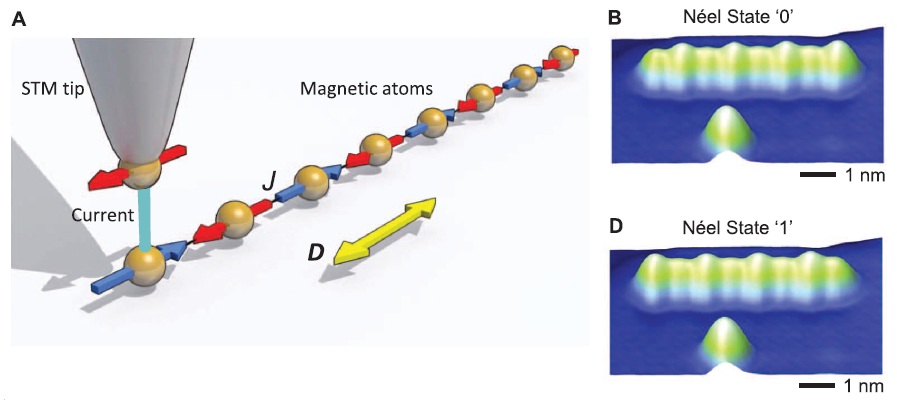
A beautifully looking graphics, isn’t it? But there is a major caveat. As its creators would agree, this image is only a very crude depiction of reality and shouldn’t be used for any scientific purpose… (c) LANES, EPFL
Nanotechnology is a wonderful science that has pushed functional devices to sizes not far away from the size of atoms. So small that if you want to image such structures, even a conventional electron microscope wouldn’t get you far. There is no way to directly see what is going on. This is a common problem. Take condensed matter physics – it is impossible to directly visualize the various interactions and events taking place inside a crystal. Or photonics, where complex light fields interact with tiny nanostructures in ways that can be really difficult to visualize, especially in real-time.
So, no wonder that artificial graphics often serve to illustrate a scientific concept or a certain device. And with the prevalence of advanced computer graphics programs such illustrations are becoming more and more fancy. In my opinion, this is a dangerous trend, because such graphics can distort the underlying science they try to depict. […]
Continue reading...

A coaxial cable plug. The coaxial nanolaser is more than 15,000 times smaller. Photo by mikemol via flickr.
When Oliver Heaviside invented the coaxial cable in 1880 he could not have foreseen the implications of his idea on modern nanotechnology. His coaxial cables consist of three layers: an inner metallic core, surrounded by an insulator, surrounded by a metallic layer on the outside. The benefit of this design is that the outer metallic layer shields the electrical signal through the cable from outside interference. This makes coaxial cables very useful for information transfer, and coax cables are used for TV antenna cables or some computer network cables. Mercedeh Khajavikhan, Yeshaiahu Fainman and colleagues from the University of California, San Diego now present a completely new application: they have fabricated coaxial lasers on the nanoscale that turn on without the usual minimum threshold power of usual lasers. To do this they had to shrink the coaxial cables first. These lasers are more than 15,000 times smaller than typical coaxial cables.

The nanoscale coaxial laser. Similar to coaxial cables it consists of an inner metal pillar and an outer metal shield. The structure is also protected from interference from the top. Inside is a semiconductor light emitter (red; insulated from the top metal through a SiO2 plug). The laser light exits through the hole in the substrate. Figure by Mercedeh Khajavikhan and Aleksandar Simic.
The benefit of a coaxial cable is that between the core and the outer metal layer well-defined and controlled electromagnetic waves can propagate shielded from any outside influence. Furthermore, shrinking such a device to the nanoscale – to length scales comparable to the light used – means that only the smallest optical beam pattern for the wavelength of light, known as the fundamental mode, fits into the small space between the metal structures. The other modes would be too large. […]
Continue reading...

Information stored by a chain of magnetic atoms. Left: an STM tip measures the magnetic state of the iron atoms. Right: through increasing the current between tip and atoms the magnetic states can be switched. Peaks become valleys and vice versa. (c) Science Magazine
I now finally got the time to follow-up on last week’s paper in Science by Andreas Heinrich‘s group at IBM on magnetic storage elements that are only a few atoms in size. There have been a few misconceptions in some of the news reports with some being plainly wrong (‘smallest storage device ever made’), and many didn’t mention much about the scientific principles behind this study, although these are quite interesting. One of the better reports appeared in the New York Times, albeit again without going much into details. So I hope I can still add something useful with this blog post.
And actually, we’ve come across Andreas Heinrich’s previous research before, he does very innovative research with scanning tunneling microscopes (STM). In this latest Science paper he has now explored the limits of magnetic storage devices. Magnetism is of course the basis for storage such as magnetic hard drives. The problem in increasing the storage density in any magnetic storage device is that the magnetic regions begin to interfere with each other as they become smaller and are integrated closer together, because magnetic states on the order of just a couple of atoms are not very stable. […]
Continue reading...






February 13, 2012
8 Comments